Features
When disasters such as earthquakes happen, governments and humanitarian organisations need to rapidly allocate aid resources to facilitate recovery, minimise the number of people displaced and reduce the long-term effects. This is a complex task that needs be undertaken in a very short space of time, with potentially serious consequences if not done well.
Being able to predict more accurately where people go in the wake of a disaster could be transformative for disaster management: it allows those coordinating the response to ensure shelters are placed in the best locations for the right number of people. Researchers at Department of Statistics, University of Oxford, in collaboration with the Internal Displacement Monitoring Centre (IDMC), have developed an open source software package to estimate displaced populations post-disaster, currently with a focus on earthquakes and cyclones. The software tool has been developed by Dr Hamish Patten and Prof David Steinsaltz, who form part of the department’s bio-demography group. The project, funded by the Engineering and Physical Sciences Research Council Impact Acceleration Account (EPSRC-IAA) grant, has recently been published with the Global Report on Internal Displacement (GRID) 2021.
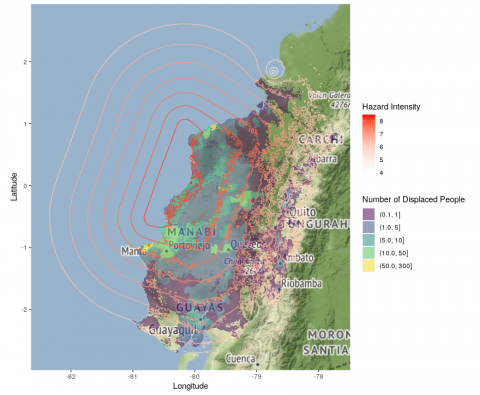
The research involved building an open source statistical software product consisting of two components:
· a back-end system which combines the data, model and state-of-the-art statistical methods into a predictive tool, learning from a broad range of historical events in order to make well-informed and accurate predictions of displacement post-disaster.
· a front-end system that interactively visualises the data and predictions, to allow a detailed exploration of important disaster information.
In a comparison of predictions against past displacement figures for over one-hundred earthquakes in 38 different countries around the world, the tool accurately predicted the total displaced population at least ten times more accurately than world leading risk models produced by the United States Geological Survey (USGS) and the Global Disaster Alerting Coordination System (GDACS). The predictions have also enabled a mapping of how the
displaced population is expected to be spatially distributed, which can be used to identify displacement ‘hotspots’ in order to allocate resources more effectively.
By coupling the software with mobile phone data-based displacement estimates provided by organisations such as Flowminder or Facebook Data for Good, we were able to produce a detailed mapping of the returned and displaced populations over time, something that has never been done before. The choice of emergency shelter locations and capacities can also be optimised with the software: given a list of potential shelter locations and capacities, the software package will produce the optimal choice of shelters. This is based on minimising the driving time between displaced populations to each potential shelter location, whilst also considering the finite capacity of each shelter.
The tool is being integrated into the risk models for IDMC, and discussions are also underway to integrate the tool into the risk models used by the International Federation of the Red Cross (IFRC). This research could have a huge impact on aid and resource allocation post-disaster.
Dr Hamish Patten, Research Associate at the Department of Statistics, said: 'Working on predicting disaster-related displacement has been a very stimulating challenge, having to bridge between academia and industry to produce a neat and polished software product for the humanitarian sector, in only six-months. The success of the project was to recognise that many recently-emerged datasets and data sources that can be used to validate risk models have been, until now, almost entirely unused.'
Dr Friederike Otto could not be more self-effacing and pleasant, answering obvious questions politely with patience and apparent interest. And yet the young Oxford professor of climate research is frankly...terrifying. It’s not her, she could not be nicer; it’s what she says. Over the last handful of years, major advances have meant that what were concerns over the impact on climate change, are understood realities. And, she says, it is costing thousands, perhaps millions, of deaths globally every single year.
What were concerns over the impact on climate change, are understood realities – and, says Dr Friederike Otto, it is costing thousands, perhaps millions, of deaths globally every single year
A six-year-old YouTube video of Fredi, as she is universally known, shows a fresh-faced postgraduate researcher telling an audience that deadly extreme weather events may be linked to climate change. Today, she may still be fresh faced, but there is no ‘may’ about it.
Thanks to advances in weather observations and computer modelling-based research by Dr Otto and her team, they now have the data. Previously, climate predictions tended to be based on one model. Now, she and her team use hundreds, thousands of simulations of models - using supercomputers and individuals who lend their processing power. The use of very different models, high-quality observations and experience of many studies has led to her saying with certainty that climate change is behind more than one-in-three deaths from heat. She says, ‘Climate change makes hot extreme events [such as heatwaves in Europe] 100 times more likely.’
‘And we’re not talking about a bit of nice weather either,’ says Dr Otto. ‘The last heatwave in the UK caused 2,500 excess deaths.’
Climate change makes hot extreme events [such as heatwaves in Europe] 100 times more likely...And we’re not talking about a bit of nice weather either. The last heatwave in the UK caused 2,500 excess deaths
Dr Friederike Otto
Two thousand five hundred deaths...from heat in this country. Imagine how many more people are affected internationally; in hot countries - where extreme events are not even recorded. But how does she know that the increased numbers of extreme events are anything to do with climate change?
‘Using multiple computer models, we compare weather under current climate conditions with a hypothetical world without industrialisation. It’s our world, but without greenhouse gas. We see 1.2º global warming – half of which can be seen in the last few decades....the question is never whether this is caused by climate change, yes or no...There are more frequent extreme events now but heatwaves are the game changer...with all other extreme events, such as flooding, there might be some casualties, but with heatwaves there are always deaths.’
In a typically terrifying aside, Dr Otto says quietly, ‘There are no figures for many parts of the world. We don’t have the global excess mortality data, but 37% of deaths from heatwaves over the last 30 years have been caused by climate change. And that is a conservative estimate.’
There are more frequent extreme events now, but heatwaves are the game changer...with heatwaves there are always deaths
Dr Friederike Otto
She adds, ‘We will get hotter. Heatwaves are a huge problem and we don’t take them seriously enough....awareness is still very limited compared with flood risk.’
Dr Otto and her team are working at the forefront of climate science and she is highly sought-after for comments on every weather event. Earlier this month, she was quoted in media everywhere, talking about the impact of climate change on the French grape harvest [not good] and more recently she has been sought for comments about the heatwave currently affecting the north-west coast of North America. Dr Otto has also issued warnings about the lack of tracking of extreme heat events in Africa [really bad] and talked about the climate-linked cost of Hurricane Harvey [huge].
She is all-too-aware of the international politicisation of concerns over climate, ‘It’s a left/right issue, which is not helping.’
Dr Otto maintains, ‘It’s better in the UK, not so polarised...but global net zero goals will only work if all countries act.'
 Five-year-old Fredi.
Five-year-old Fredi.'I hated school,’ says Dr Otto. ‘I tried to be there are little as possible.’
But, because of the German education system, and her poor school record, Dr Otto was not able to apply to study such a ‘popular’ subject as History at university. And she was obliged to take either Physics or Engineering – the least popular subjects.
Arriving at Potsdam University, she studied Physics – and was originally very interested in quantum theory. Nevertheless, she also took the only option in climate, ‘basically meteorology not climate change,’ and did not find it very interesting at all. She stuck with quantum physics and also started studying philosophy.
She left Potsdam to take a PhD at a nearby university in Berlin. Increasingly, her interest was captured by the philosophy of science – what it means to be a scientist and what it is that makes science science. And this still underpins her work today, she says.
‘We ask if an event [a flood] is caused by climate change – does this really mean looking at the change in one day’s rainfall or actually the management of rivers...there is always a trade-off. We don’t have observations of all of reality, but these questions are not asked in climate science,’ she says.
Dr Otto is clearly determined to bring attention to the damage wrought by climate change in terms of extreme events. And she is excited by the research into climate finance and net zero pledges (from countries, business and organisation). Both are essential, she says, in the battle to reduce the deadly impacts of climate change. But the scientist is sanguine about whether the pledges will turn into reality, ‘They’ve talked the talk now let’s see them walk the walk.’
One of her students, has been following attempts to bring climate change claims against companies and governments through the courts. The impact could be enormous, says Dr Otto, who talks positively about the prospect of litigation forcing bodies into honouring their climate change pledges, ‘If countries are forced to act and show that they can transform, others will follow.’
She maintains, ‘The legal route will not be the only one, to solve problems. But there could be a ripple effect, [after a court ruling] and governments will do more...But it is especially important for companies to show they are doing something...and a lot of companies have more power than nation states.’
Big national polluters may not care about court rulings or international pressure, says Dr Otto, but ‘we need global net zero not just the UK’ and they do care about ‘money and global markets’
Big national polluters may not care about court rulings or international pressure, says Dr Otto, but ‘we need global net zero not just in the UK’ and they do care about ‘money and global markets’.
She points out, ‘If the European market has strict regulations for importing goods with carbon content, this could be an important factor...and finance is another. Right now, central banks are looking at climate risk.’
It is 10 years, to the day, since the young Dr Otto came to Oxford as a post-doctoral researcher without an employment contract. Now, she is Associate Director of the Environmental Change Institute and Associate Professor of the Climate Research Programme. And she insists, Oxford is ‘a fantastic place to work’.
‘You meet all sorts of people who work here and who come here. And from day one I had the absolute freedom to research what I found interesting as long as I could find the funding.’
People thought I was a weirdo doing something that scientists shouldn’t...a lot of people want to work with me now
Dr Friederike Otto
She talks warmly of her own graduate students, about whose research she is wholly supportive and enthusiastic, ‘Freedom has benefits and everyone here tries to help and support you, especially the admin staff. It’s completely different from universities elsewhere.’
Reflecting on her journey and the rapid development of climate change science, Dr Otto says, ‘People thought I was a weirdo doing something that scientists shouldn’t...a lot of people want to work with me now.’
In recent years, climate concerns have shot up the political agenda but not long ago environmentalists, who warned about the impact of human activity on the planet, were generally seen as fringe or even eccentric figures. Oxford professor, Philip Stier, is now at the forefront of climate science, as a leading researcher into clouds. He was very much ahead of the curve, but is the complete antithesis of the eccentric academic.
In the days before social media, there was little interest in what one school child had to say about climate change. And, when the young Philip announced he wanted study climate, his friends thought there was little future in it
As a schoolboy in Germany in the 1990s, he was worried about the environment, so worried he had a file where he would keep the newspaper stories which appeared from time to time. And, while his friends cruised to school by car, he doggedly rode his bike past them, as they climbed into their cars, and went to the station and where he would take a train to class. It took a bit longer and was a bit less comfortable. His friends thought he was a bit mad. But, he recalls, ‘I was agitated about climate, even then.’
 Professor Stier went to school by bike. His friends thought he was a bit mad.
Professor Stier went to school by bike. His friends thought he was a bit mad. In the days before social media, though, there was little interest in what one school child had to say about climate change. And, when the young Philip announced he wanted study climate at university, his friends and even some family, thought there was little future in it.
He laughs, ‘They said I would either become a ‘weather frog’ [a German TV forecaster] or a taxi driver...climate science wasn’t seen as likely to lead to a career.’
But Philip liked science, particularly Physics, and he was determined to study the link between climate and human activity. So, to the amusement of others, he chose to take meteorology at Munich, his local university. While many young Physicists were set on sorting out string theory and other ‘glamour’ questions, Philip wanted to apply science to environmental questions. After his undergraduate degree, he came to the UK to take a Masters and then returned to Germany to the famous Max Planck Institute for Meteorology in Hamburg for his doctorate. No one was laughing anymore.
‘It was a perfect match,’ he says enthusiastically. ‘I started doing a lot of research on aerosols (suspended particles) in the atmosphere.’
Clouds are a particular passion for Professor Stier. He admits to being able to talk at length on the subject of clouds, and sitting against a cloudy Oxford sky is clearly at home.
Clouds are a particular passion...Clouds are fantastic...I spend a lot of time looking at clouds. They have a huge effect on the Earth’s climate
Professor Philip Stier
‘Clouds are fantastic...I spend a lot of time looking at clouds, he says. ‘They have a huge effect on the Earth’s climate.’
But he is not looking to take on a role as a UK-based weather frog. Clouds, Professor Stier says, are scientifically very important in understanding climate change and are critical to research and solutions to the crisis. He explains, ‘There are natural aerosols in the atmosphere, for instance pollen, but there are other types of aerosols, man-made aerosols, caused by pollution. They modify the climate directly [by scattering and absorption of radiation] and affect clouds [which, in turn, affect the environment and climate]. This is because each cloud droplet in the atmosphere forms on an aerosol particle.’
These ‘polluted clouds’, which contain more aerosols and hence more cloud droplets, are brighter, says Professor Stier, ‘reflecting more sunlight back to space and therefore cooling the Earth’. However, aerosols also reduce the air quality and affecting people’s health, especially all over the developing world. Some of the aerosols, like sulfuric acid, are also chemically formed from gaseous emissions inside of cloud droplets. The more emissions we pump out, the more clouds become carriers of harmful pollution.
Like acid rain?
‘Yes,’ he says. ‘Like acid rain.’
Then, puncturing the sense of getting something right, he adds, ‘We tell our undergraduates, there are no wrong questions in Physics.’
Can you tell which are polluted clouds, just by looking at them?
‘That’s a big question,’ he says, with an air of knowing the answer. ‘The clouds, which contain more aerosols, are brighter but it is impossible to tell from looking at a single polluted cloud how much brighter it is than in its natural state. We are looking now at new ways how they can be identified, which includes tracks from known pollution sources, such as ships and volcanoes, or new artificial intelligence techniques that allow us to analyse vast amounts of satellite data.’
The professor is very much against the ‘doomsday’ scenarios of popular culture, where menacing clouds precipitate the end of civilisation
There may be no wrong questions, but there are some very difficult answers in respect of cloud research. The science is not as simple as: reduce emissions, everything is all right.
Professor Stier reveals that, actually, even though they may be purveyors of pollution, aerosols partly shield us from the impact of climate change.
‘It’s a balancing act,’ he says. Getting rid of air pollution may actually increase the global temperature in the short term.
‘Uncertainty is very large,’ he says, of what may be the effect. ‘There is no doubt the greenhouse gas effect is happening and we know aerosols cool the Earth.’
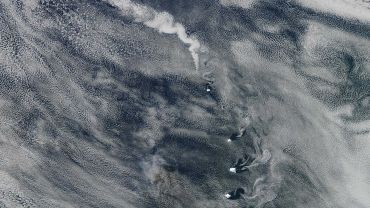 Like a Bond movie: Volcano Albedo Effect Vortex clouds
Like a Bond movie: Volcano Albedo Effect Vortex cloudsBut this is not a reason to pump out more pollutants, he insists.
‘We have to go to net zero, it is very urgent,’ he says. Man-made aerosols have devastating health impacts on parts of the developing world in particular, says Professor Stier. But take away their brightening of cloud banks reflecting back the sun’s rays and the world could become warmer in the short term (while greenhouse gas effects will dominate in the long term).
There could be increasing extreme weather events and colleagues across the University provide the scientific evidence attributing our changing weather to climate change, he says. There could be tipping points for the climate. But, although it sounds like the plot of a disaster movie, the professor is very much against the ‘doomsday’ scenarios of popular culture, where menacing clouds precipitate the end of civilisation.
In a James Bond-style plotline, he admits there has been research into using technology to mimic the cooling impact of massive volcanic eruptions or to brighten clouds to lower artificially the temperature
He maintains Oxford is a key place for cloud and climate research and he says, soothingly, this is a question of fluid dynamics, although no one fully understands what clouds will do in a changing climate. But, in a James Bond-style plotline, he admits there has been research into using technology to mimic the cooling impact of massive volcanic eruptions or to brighten clouds to lower artificially the temperature.
‘There can be a significant temperature drop for as much as two years after a volcanic eruption.’
So could we use aerosols to protect us? Er...yes, perhaps, he says.
‘It would be very risky,’ says Professor Stier. ‘If we developed technology, the global temperature could be reduced but the risk is that people would do nothing about emissions so that the radiative impact of greenhouse gases continue to accumulate. It may be possible but we don’t know what would be the impact on the e.g. ozone layer or regional climate, precipitation and extreme events. That would be a very big risk as well.’
In other words, Bond villains need not apply. Professor Stier emphasises that following the science to a net zero emission future is the best way forward. But, he admits, most scientists travel too much.
‘We have to do this for work,’ he says ruefully. But, he maintains, aeroplanes in themselves are not the real problem. It is the distance, rather than technology, which creates the large carbon footprint.
It may be possible [to use cloud technology to cool the Earth] but we don’t know what would be the impact on the ozone layer or regional climate, precipitation and extreme events. That would be a very big risk
‘Going by air is no more polluting than travelling by car – but it tends to be much longer journeys,’ he says. ‘So the impact is much larger.’
Professor Stier has a hybrid car, although he rarely drives, preferring to walk or cycle. And even used to live in the home of the freeway, Los Angeles, when he could not even drive.
‘There is a public transport system, only most people don’t use it, he laughs.
It is not easy being environmentally conscious, even now. Try to get a heat pump fitted, he says. Such small frustrations aside, Professor Stier may not believe in doomsday scenarios, but he is keen to impress that there is no time to waste. And, scientific work, into climate, including clouds, is the key to the crisis.
By Dr Marco Wittman, Department of Experimental Psychology
Have you ever played team sports? Picture how it felt when your team succeeded. You probably think the whole team performed well and everyone contributed to the win. Indeed, being part of a well-performing team can make us feel more capable ourselves. But if the team performs poorly, we can feel less competent than we actually are. In fact, this phenomenon is one that we discovered a few years ago called self-other-mergence.
One reason why self-other-mergence is such an interesting phenomenon is that we can link it to a very specific region in prefrontal cortex. The prefrontal cortex is the part of our brain that is responsible for higher cognitive functions such as learning, conceptual thinking and decision making.
In neuroscience, we know a lot about how we perceive and value objects in the world, like money, food, etc. We know much less about how the brain perceives other people and how it perceives relationships between others and ourselves. Self-other-mergence offers a unique window into this process. It might even tell us something about what our “social default” is. Do we naturally see ourselves and others as separate individuals – or is our default predisposition to have an integrated sense of self and other? This is the question we asked in our new study.
But first things first. What exactly is self-other-mergence? Self-other-mergence means people derive an impression of their own abilities not just from their own performance. Instead, they also integrate how well other people are doing into their self-evaluation. How others make us feel about our own abilities – such as better or worse – depends on the type relationship we have with them in terms of whether we are cooperating or competing with them. We align our sense of our ability to the performance of our teammates (our cooperators).
By contrast, we overestimate the difference between us and competitors: we perceive competitors such as the opposing team as particularly strong if they are winning and underestimate their ability when they are losing.
In our study, participants were asked to play a game on a computer while lying in a neuroimaging scanner that measured their brain activity. They played rapid, simple games by pressing buttons and received feedback about how well they were doing and how well others were doing. This allowed them to learn over time about the performance levels of each player. Participants then indicated how well they expected everyone to perform in the future.
As experimenters, we knew exactly how well each player performed at each point in the experiment, and by using mathematical models, we could see self-other-mergence in the data. Interestingly, the participants naturally integrated some information about the performance of the other player into their self-image. This self-other-mergence effect is quite small, but very significant and replicates over several studies.
The key innovation of our study is that we used brain stimulation to find out how the prefrontal cortex is important for self-other-mergence. We used a brain stimulation protocol that is well known to be safe and that has no longer-term side effects. But it is able to disrupt brain activity for a short period of time. By applying brain stimulation over the prefrontal cortex while participants were in the brain scanner, we could simultaneously measure the effect of brain stimulation 1) on activity in the prefrontal cortex and 2) on the strength of the self-other-mergence effects in behaviour. This was critical for us, because it allowed us to ask how the prefrontal cortex is important for self-other-mergence. There were two possible hypotheses.
Our first hypothesis was that activity in the prefrontal cortex might be responsible for causing self-other-mergence in the same way that activity in visual parts of the brain may cause us to see visual stimuli such as faces or houses. Our alternative hypothesis was that activity in the prefrontal cortex might be important for suppressing an even higher degree of self-other-mergence, similar to the way that activity in other brain regions might be important for maintaining self-control and ensuring we do not reach out for tasty snacks when we are on a diet. Which of the two was it? Did activity in the prefrontal cortex cause or suppress self-other-mergence?
After brain stimulation, the neural signatures of self-other-mergence were no longer visible in the prefrontal cortex. This is what we expected to happen. But what we also found is that when neural activity in the prefrontal cortex is disrupted, self-other-mergence behaviour happened even more – people were even more likely than before to merge estimates of their own and the other players’ performances together.
Another way of describing this is that silencing self-other-mergence in the brain significantly increases the self-other-mergence behaviour.
This indicates that our second hypothesis was the correct one: the prefrontal cortex is indeed important for suppressing self-other-mergence rather than causing it. This means we have a natural tendency to merge self and other representations in the brain. Activity in the prefrontal cortex is critical for suppressing this mix-up and allowing us to have separate images of oneself and other people.
Our results suggest that we as humans are very social creatures indeed. We naturally have a contextually embedded and integrated sense of ourselves and others. Our estimates of the abilities of ourselves and others that are inherently interdependent. Activity in the prefrontal cortex serves to keep them separate to ensure a correctly calibrated sense of self.
Humans perceive the world around them with five senses – vision, hearing, taste, smell and touch. Many other animals are also able to sense the Earth’s magnetic field. For some time, a collaboration of biologists, chemists and physicists from the Universities of Oxford (UK) and Oldenburg (Germany) have been accumulating evidence that the magnetic sense in night migratory birds, such as the European robin, is based on a specific light‐sensitive protein in the eye. In the current edition of the journal Nature, this group demonstrates that the protein cryptochrome 4, found in birds’ retinas, is sensitive to magnetic fields and could well be the long‐sought magnetic sensor.
A collaboration of biologists, chemists and physicists have been accumulating evidence that the magnetic sense in night migratory birds, such as the European robin, is based on a specific light‐sensitive protein in the eye.
Henrik Mouritsen’s research group in Oldenburg succeeded in extracting the genetic code for cryptochrome 4 in night‐migratory European robins and then produced the protein in large quantities using bacterial cell cultures. Christiane Timmel’s and Stuart Mackenzie’s groups in the Oxford Chemistry Department then applied a wide range of magnetic resonance and novel optical techniques to study this protein and demonstrated its pronounced sensitivity to magnetic fields. The measurements required the development of new instruments by several generations of talented postdoctoral researchers and graduate students.
The team also shed light on the mechanism by which this sensitivity arises – based on electron transfer reactions triggered by absorption of blue light. Proteins like cryptochrome consist of chains of amino acids: robin cryptochrome 4 has 527 of them. Oxford’s Peter Hore and Oldenburg physicist Ilia Solov'yov performed quantum mechanical calculations supporting the idea that four of the 527 – known as tryptophans – are essential for the magnetic properties of the molecule.
According to their calculations electrons hop from one tryptophan to the next generating so‐called radical pairs which are magnetically sensitive.
According to their calculations electrons hop from one tryptophan to the next generating so‐called radical pairs which are magnetically sensitive. To test this experimentally, the team from Oldenburg produced slightly modified versions of the robin cryptochrome, in which each of the tryptophans in turn was replaced by a different amino acid to block the movement of electrons. Using the modified proteins, the Oxford groups were able to elucidate the role of different radical pairs in the observed magnetic field effects.
"We think these results are very important because they show, for the first time, that a molecule from the visual apparatus of a migratory bird is sensitive to magnetic fields" says Mouritsen. But this is not, the team emphasises, definitive proof that cryptochrome 4 is the magnetic sensor. In all experiments, the researchers examined isolated proteins in the laboratory and applied magnetic fields stronger than the Earth's magnetic field. "It therefore still needs to be shown that this is happening in birds’ eyes", Mouritsen stresses. Such studies are not yet technically possible.
However, the authors think the proteins involved could be significantly more sensitive in their native environment. In cells in the retina, the proteins are probably fixed and aligned, increasing their sensitivity to the direction of the magnetic field. Moreover, they are also likely to be associated with other proteins that could amplify the sensory signals. The search is on for these, as yet unknown, interaction partners.
These results show, for the first time, that a molecule from the visual apparatus of a migratory bird is sensitive to magnetic field.
Hore says: “If we can prove that cryptochrome 4 is the magnetic sensor we will have demonstrated a fundamentally quantum mechanism that makes animals sensitive to environmental stimuli a million times weaker than previously thought possible”.
The magnetic field effect work has been supported by external funding agencies such as DARPA; the US Air Force Office of Scientific Research; the EMF Biological Research Trust; the Office of Naval Research Global; the U.S. Army Research Office, an element of the DEVCOM Army Research Laboratory; the German Science Foundation; the SCG Innovation fund and the European Research Council. It is currently supported by the ERC Synergy Grant ‘QuantumBirds’.
Christiane Timmel is Professor of Chemistry in Oxford and Director of the Oxford Centre for Advanced Electron Paramagnetic Resonance (CAESR).
Peter Hore and Stuart Mackenzie are Professors of Chemistry in Oxford.
Full paper: Magnetic sensitivity of cryptochrome 4 from a migratory songbird, Nature (2021). DOI: 10.1038/s41586-021-03618-9, www.nature.com/articles/s41586-021-03618-9
- ‹ previous
- 17 of 247
- next ›

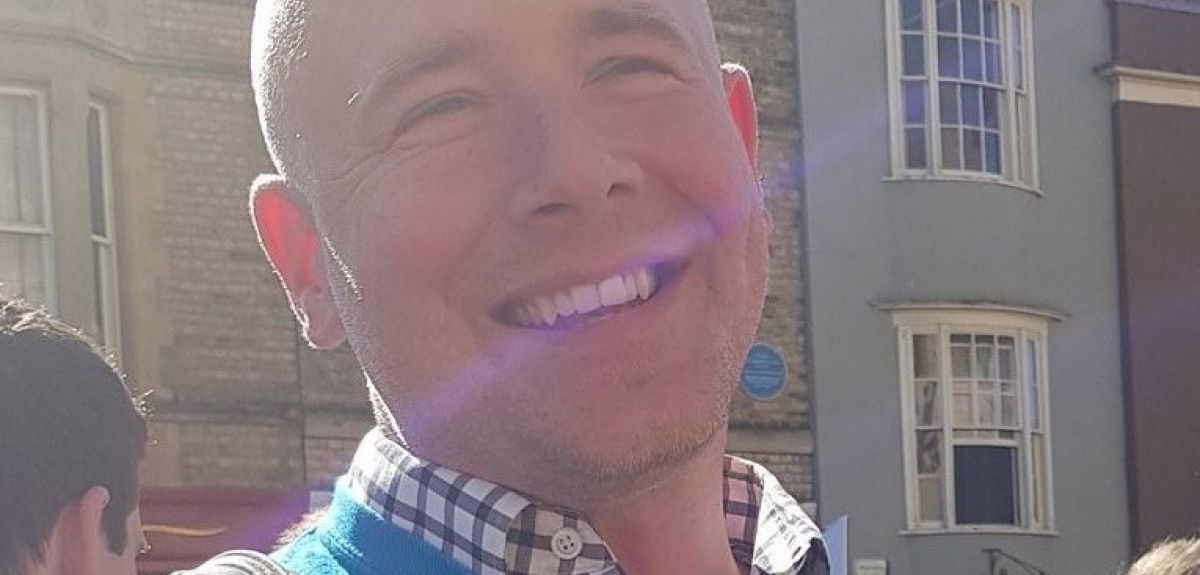
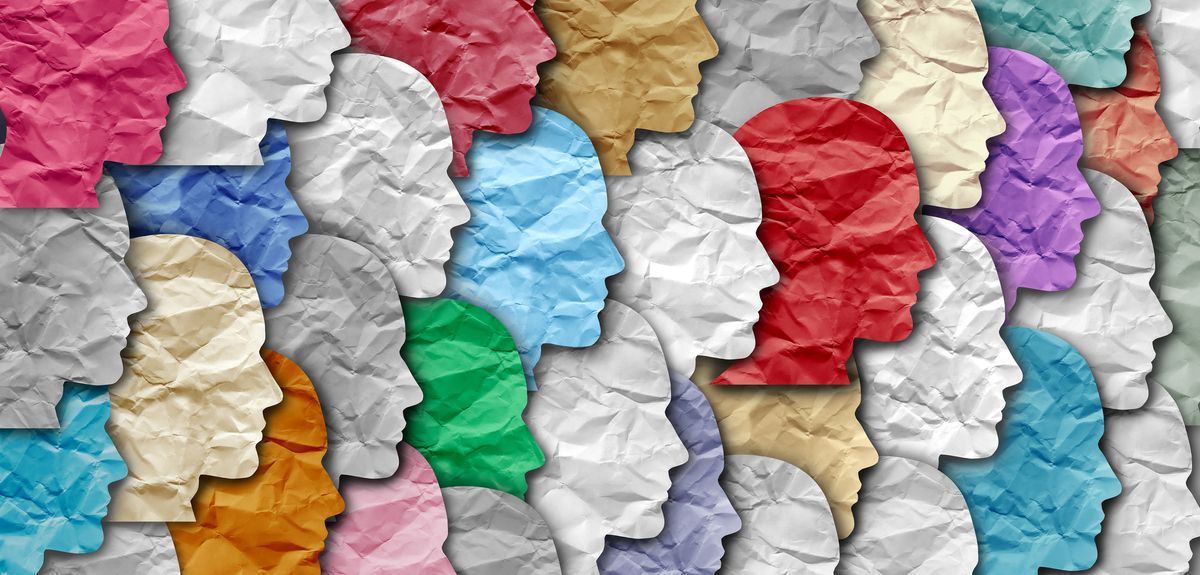
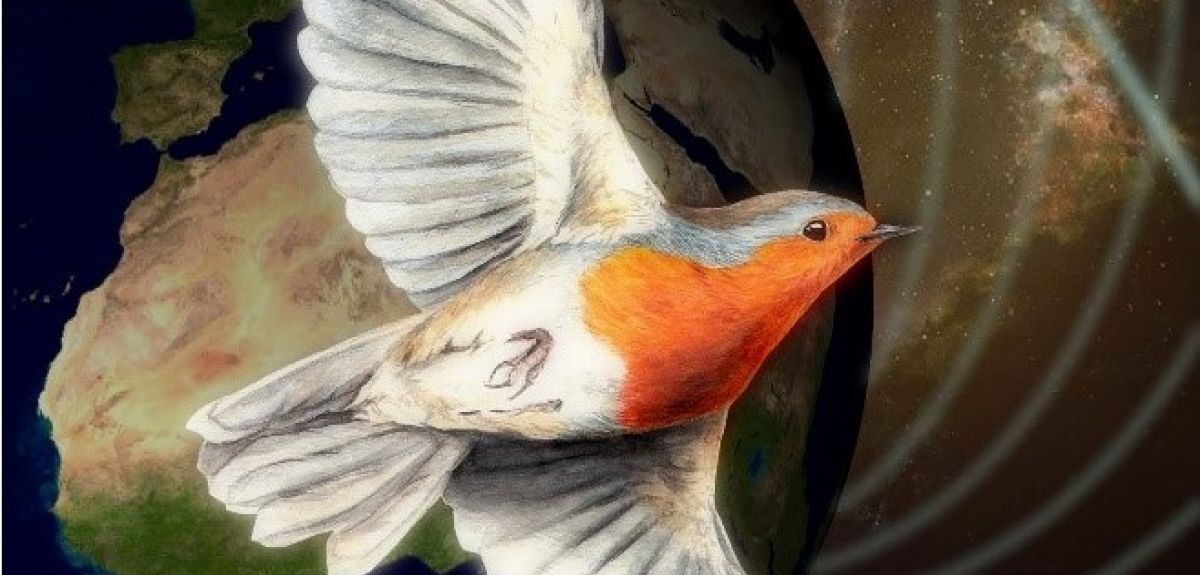
 World Malaria Day 2024: an interview with Professor Philippe Guerin
World Malaria Day 2024: an interview with Professor Philippe Guerin From health policies to clinical practice, research on mental and brain health influences many areas of public life
From health policies to clinical practice, research on mental and brain health influences many areas of public life From research to action: How the Young Lives project is helping to protect girls from child marriage
From research to action: How the Young Lives project is helping to protect girls from child marriage  Can we truly align AI with human values? - Q&A with Brian Christian
Can we truly align AI with human values? - Q&A with Brian Christian  Entering the quantum era
Entering the quantum era Can AI be a force for inclusion?
Can AI be a force for inclusion? AI, automation in the home and its impact on women
AI, automation in the home and its impact on women Inside an Oxford tutorial at the Museum of Natural History
Inside an Oxford tutorial at the Museum of Natural History  Oxford spinout Brainomix is revolutionising stroke care through AI
Oxford spinout Brainomix is revolutionising stroke care through AI Oxford’s first Astrophoria Foundation Year students share their experiences
Oxford’s first Astrophoria Foundation Year students share their experiences